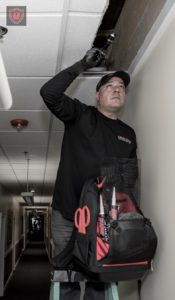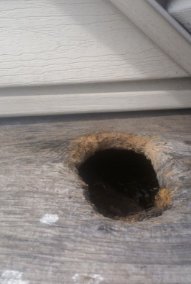

Rodents, Mice
Most of the rodents, mice in our area live in the wild and pose little threat to people or pets. Listed below, are the most common species of rodents known to infest homes and buildings in Massachusetts.
House Mouse
The ‘House Mouse is an invasive species of mice. Because its not native to our region, these mice typically do not thrive in the wild. This rodent is totally commensal and survives by living with off of people without contributing anything positive to the environment. The House Mouse can be a problem all year round. The weather outside has little effect on these indoor mice.
Why do Rodents, Mice come inside?
The weather does effect the White-Footed Mouse and other species like Deer Mice. These are native wild species of mice. They actually thrive and prefer to live in the wild but do seek shelter in the winter. Our homes and buildings provide the shelter they need. These mice will often times bring their own food source in with them. For this reason the mice may go undetected for some time as they are not really foraging around kitchens like a House Mouse would. Mice are detected when people find the food scraps and droppings. The food is made up of acorns, seeds, nuts and other outdoor food sources they have brought inside. These mice usually keep behind the scenes, preferring attics and crawlspaces over mainstream living areas. Watch for mouse droppings in attics and tunneling holes in the insulation.
Squirrels
Like mice, there are several species of squirrel, all Native to Massachusetts. The Gray Squirrel is the most common species of squirrel to invade buildings in our area. As the leaves fall from trees and nighttime temps drop, Gray Squirrels look for a protected hollow shelter to store food, stay warm and dry, and rear their young in the Spring. Home owners can usually tell the difference between Squirrel noises and Mice noises by noting the time of the noise or activity. Squirrels usually move and become active in the morning hours as the sun rises and again later in the afternoon before it sets. Mice on the other hand are more nocturnal and active at night.
Flying Squirrels can invade homes and buildings too. This species is much smaller than the Gray and actually glides through the air from trees to buildings. This is also a nocturnal rodent species that is very vocal at night.
Rats
Norway Rats are an invasive rodent species in Massachusetts. Rats will take advantage of entry points and garbage all year round. Rats move inside for food and shelter as a result of colder weather months.
Rodent, Mice Inspection
Have a professional Rodent, Mice inspection performed. A thorough inspection can identify activity and potential entry points. Its important to inspect high and low as rats and mice will normally enter close to ground level and squirrels higher up near roof-line, dormers etc.
Keep all trash or garbage in rodent proof containers
Trash containers should have tight fitting lids that prevent rats, mice and wildlife from feeding .
Seal the gaps and openings
With the help of a rodent proofing/ exclusion expert, professional rodent-proofing is the safest and most effective long-term control method available today. Rodent-exclusion should focus on exterior foundations and basement areas for mice and rats. Upper areas including soffits, vents, chimney, trim boards etc. should be inspected and sealed for squirrel prevention.
The best materials to use for rodent-proofing are stainless steel mesh, hydraulic cement, sheet-metal, professional sealants and custom fitted vent and chimney covers. Our specialists are available to perform the work or consult with homeowners or handy person.
Contact us for more information about our rodent protocol!
866-472-5858
